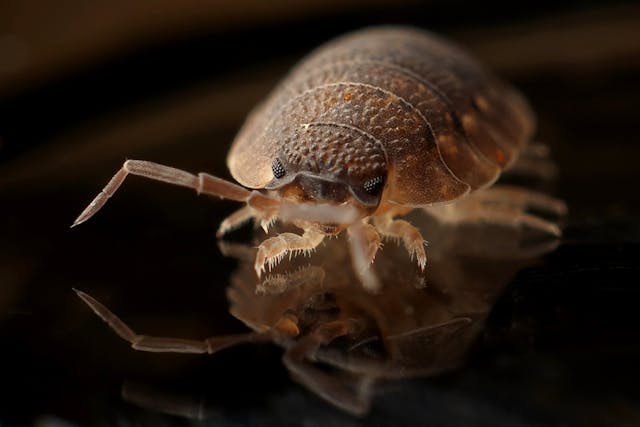When people think about water damage, they usually picture soggy drywall, moldy smells, and maybe a ruined ceiling. What they don’t usually think about? Bugs. Rodents. Termites. But here’s the thing: water damage and pest problems go hand in hand — often more than people realize. Where there’s excess moisture, pests follow. And if you’re dealing with one, you should be thinking about the other.
Here’s how water issues create the perfect environment for infestations, and why pest control should be part of every water damage recovery plan.
1. Moisture Attracts Pests — Full Stop
Most pests love damp environments. Some need it to survive. Others just use it as a signal that a structure is vulnerable.
- Termites are drawn to moist, softened wood — it’s easier to chew and build into.
- Carpenter ants don’t eat wood, but they nest in damp, damaged areas where they can hollow it out.
- Cockroaches, silverfish, and earwigs thrive in damp basements, behind walls, and under sinks.
- Rodents will follow leaky pipes and wet insulation because it signals shelter and often food.
So if you’ve had a leak, flood, or persistent humidity problem, pests are probably already interested — even if you haven’t seen them yet.
2. Water Damage Weakens Defenses
Water doesn’t just make things soggy — it breaks them down. Wet drywall crumbles. Wood swells and warps. Insulation gets heavy and slumps out of place. All of that creates entry points.
Cracks. Gaps. Holes around window frames and under baseboards. That’s an open invitation for pests. Once inside, they can burrow into softened materials or nest in places that used to be too dry or sealed to access.
So even a minor leak behind a dishwasher can end up compromising pest defenses throughout a whole room.
3. Mold and Rot = Pest Buffets
Mold and mildew are a problem for human health — but for pests, they’re just another food source.
- Fungus beetles, booklice, and certain mites feed on mold.
- Rodents sometimes nest in moldy insulation because it’s soft and warm.
- Termites and ants follow rot because it signals a “diggable” structure.
In other words, if your water damage led to mold, then you’ve already upgraded your home to a five-star buffet (from a pest’s perspective).
4. Long-Term Moisture = Invisible Infestation
One of the worst combinations is a slow leak and time.
Why? Because when water or storm damage develops gradually — like a drip under the sink or condensation in the attic — pests can move in and thrive unnoticed for weeks or months.

That’s when you get real infestations.
The ones where you pull up a piece of trim and find an ant colony. Or open a wall and discover termite tunnels.
By the time visible damage shows up, the pests may have already done structural harm — not just piggybacked on it.
5. Post-Flood or Leak? Pest Control Should Be Part of the Plan
If you’ve had a major leak, storm damage, or any situation that left part of your home wet for more than a few hours, it’s not just a cleanup issue — it’s a pest prevention issue.
Drying the space quickly is critical. So is removing damaged material and treating hidden areas with antimicrobial solutions. But it’s just as smart to:
- Inspect for early signs of insect or rodent activity
- Seal up potential new entry points
- Treat exposed wood or framing with pest-repelling products
- Coordinate with a pest control expert who understands moisture-attracted pests
Because otherwise, you might fix the water damage but leave the door wide open for a new infestation.
6. The Reverse Is Also True: Pests Can Cause Water Damage
It goes both ways. Some pests are also the root of water problems.
Rodents chew through pipes or gnaw on HVAC insulation, causing condensation to build up.
Carpenter ants and termites can compromise joists, which leads to sagging structures and gaps where water gets in.
Burrowing insects can damage seals around windows, skylights, and doors.
So even if you don’t have a plumbing leak, a pest issue could be quietly letting moisture inside your home.
Final Thought
Water damage and pest problems aren’t separate issues — they’re often symptoms of the same underlying vulnerabilities. Dampness invites pests, and pests often make water damage worse. So whether you’re dealing with a fresh leak or recovering from a flood, don’t treat pest control as an afterthought. Treat it as part of the cleanup. Because the real goal isn’t just drying out your space — it’s protecting it for good.
